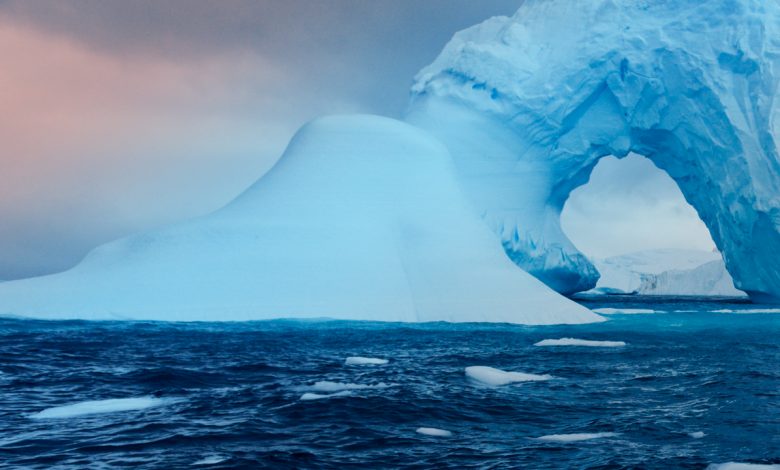Daily News Analysis
Ambition on Melting Ice (AMI) Group

Topic- International Grouping and Agreements [GS Paper-2]
Context- At COP27, a broad coalition of 18 governments joined together to create a new high-level group known as ‘Ambition on Melting Ice (AMI) on Sea-level Rise and Mountain Water Resources’.
AMI Group
- The “AMI” group aims at ensuring impacts of cryosphere loss is understood by political leaders and the public, and not only within mountain and polar regions, but throughout the planet.
- The founding governments of the group are Chile (co-chair), Iceland (co-chair), Peru, Czech Republic, Nepal, Finland, Senegal, Kyrgyz Republic, Samoa, Georgia, Switzerland, New Zealand, Monaco, Vanuatu, Sweden, Tanzania, Liberia, Norway and Mexico.
Declaration of the Group
- Climate change has already been a reason for dramatic changes in the global cryosphere, Earth’s snow and ice regions.
- Lives and livelihoods are threatened by, and some are already lost from, these changes.
- Also Indigenous peoples in both the Arctic and mountain regions have been among the earliest affected.
- The IPCC Sixth Assessment Cycle reports, including the Special Report on Ocean and Cryosphere in a Changing Climate, state that such changes in the cryosphere will worsen with each additional increment of global warming and greenhouse gas emissions in the atmosphere.
- The consequences are predicted to occur both within and far beyond those in polar and mountain regions.
- In polar fisheries, in addition to warming these include rapid acidification of polar oceans, which scientists say will reach a critical threshold at 450 ppm, a level we are on track to reach in just 12 years.
Recommendations:
- Protecting the cryosphere through significant climate action is not a matter for mountain and polar nations alone: it is a matter of urgent global concern, because the greatest impacts on human communities lie well outside these regions.
- Rapid decline in global greenhouse gas emissions, to keep alive the possibility of limiting global warming to 1.5°C, are our best options to limit cryosphere losses and the resulting chain of potential catastrophes.
- The need to make pre-2030 emissions reductions a matter of urgency is important for the benefit of all our societies.
Cryosphere
- The cryosphere is the part of the Earth’s climate system which includes solid precipitation, snow, sea ice, lake and river ice, icebergs, glaciers and ice caps, ice sheets, ice shelves, permafrost, and seasonally frozen ground.
- The term “cryosphere” traces its origins to the Greek word ‘kryos’ which means frost or ice cold.
- The cryosphere extends globally, existing seasonally or perennially at most latitudes, not just in the Arctic, Antarctic, and mountain regions, and in approximately one hundred countries.
- The largest continental ice sheets are found in the continent, Antarctica.
- About 70% of the Earth’s freshwater exists as snow or ice.
Impacts of Cryosphere on Global Climate:
- Snow and ice have high albedo and they reflect most of the light without being absorbed and helps in cooling of the earth.
- The presence or absence of snow and ice affects the heating and cooling of Earth’s surface.
- This also influences the entire planet’s energy balance.
- Melting of ice reduces the reflective surface, and the ocean and land are darker in color, that absorb more solar radiation, and then release the heat to the atmosphere.
- This causes more warming and so more ice melts which is known as a feedback loop.
- Permafrost is a major source of methane and carbon dioxide.
- The permafrost of the polar region has trapped tons of carbon inside its soil.
- If ‘feedback loop’ aggravates, the carbon is released in the form of methane- a powerful greenhouse gas- which causes global warming.
- It contains about 1,400 to 1,600 billion tons of carbon.
- In terms of carbon budgets, in the 1.5°C climate warming scenario, the melting of permafrost is expected to result in a range of 150–200 Gt CO2-eq emissions, while at 2+°C degrees would result in at about 220–300 Gt CO2-eq by 2100, comparable to the total emissions of countries like Canada or the entire EU.
- Melting of the cryosphere affects the volume of water in oceans. Any changes in the water cycle affects global energy or heat budget, and thereby global climate.
- The emission of GHGs and changes in albedo from a melting Arctic are projected to more than double the Arctic’s contribution to global warming.





.png)



